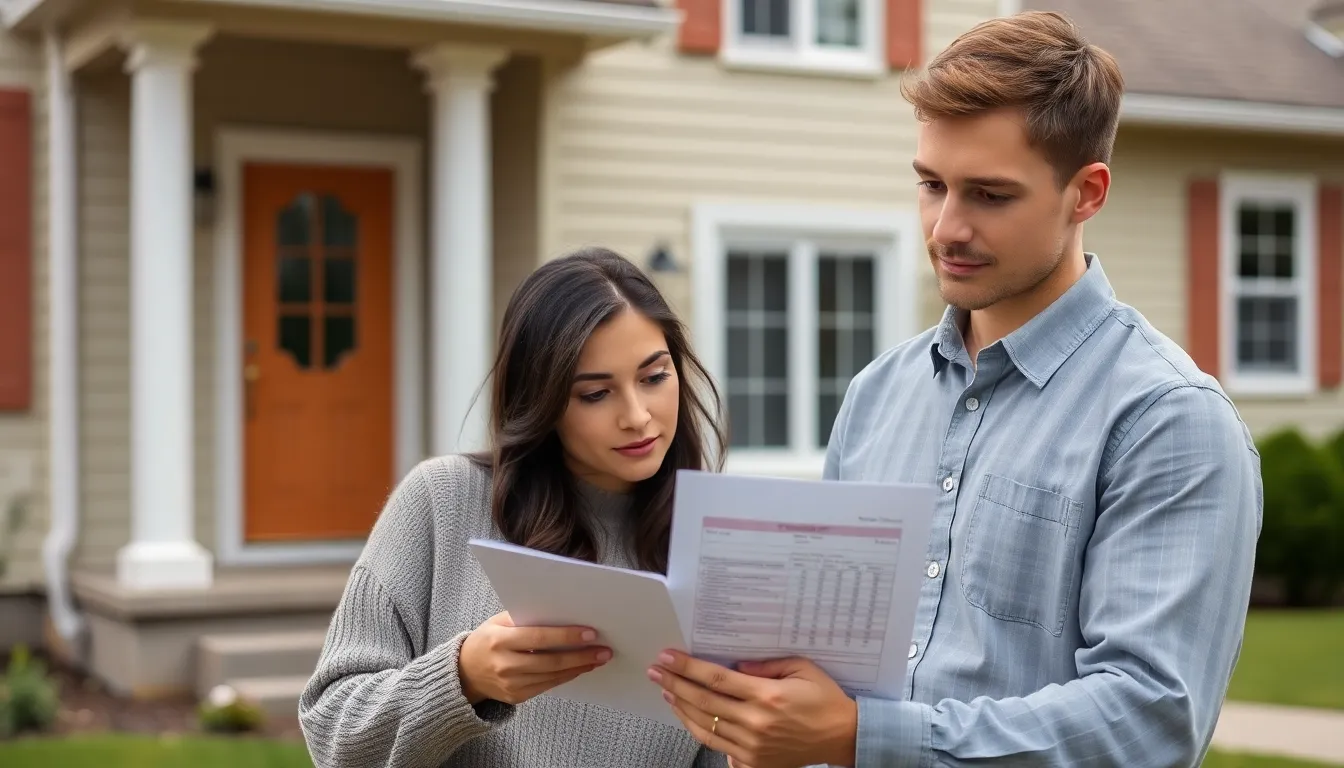Table of Contents
ToggleBuying a house is a dream for many, but let’s face it—saving for that down payment can feel like trying to find a unicorn in a haystack. With rent prices soaring and avocado toast calling your name, it’s no wonder the idea of stashing away thousands seems daunting. But fear not! With a little creativity and some smart strategies, that dream home can be closer than it appears.
Understanding Down Payments
A down payment represents an initial payment at the time of purchasing a home. This sum typically ranges from 3% to 20% of the home’s purchase price, depending on the mortgage type. Lenders often require this payment to ensure buyers have a stake in the property’s value.
What Is a Down Payment?
A down payment signifies a buyer’s financial commitment to the home. Buyers pay this amount upfront during the closing process. Its size can influence mortgage options, monthly payments, and interest rates. The more substantial the down payment, the lower the loan amount needed. Programs exist for first-time buyers that allow for smaller down payments, like FHA loans, which may require only 3.5%. Thus, buyers should assess their financial situations to determine the best strategy.
Importance of a Down Payment
The down payment carries significant importance in the homebuying process. A larger down payment can result in favorable loan terms and reduced monthly payments. Additionally, buyers with higher down payments often avoid private mortgage insurance costs, which protect lenders if payments default. Equity also builds faster with larger payments, providing homeowners financial security. Therefore, understanding available resources and savings goals can greatly ease the path to achieving this crucial step.
How Much to Save?


Determining how much to save for a down payment is a crucial step towards homeownership. Buyers typically aim for a range between 3% and 20% of the home’s purchase price.
Determining Your Target Amount
To find the right target amount, buyers should first assess their budget and desired home price. Consider a home costing $300,000, where a 20% down payment amounts to $60,000. Setting a specific savings goal provides motivation and clarity throughout the savings journey. Evaluating personal financial situations and timelines helps in deciding how much to save monthly. Utilizing savings calculators can ensure that goals remain realistic and achievable.
Factors Affecting Down Payment Requirements
Several factors influence down payment requirements for potential homebuyers. The type of mortgage affects the percentage needed; conventional loans often require higher down payments compared to FHA loans. Credit scores play a significant role, as better scores can lower required down payment percentages. Location also impacts requirements, with some areas offering assistance programs that lower or eliminate the need for large down payments. Additionally, lenders may consider overall financial health, shaping down payment structures tailored to individual circumstances.
Effective Saving Strategies
Achieving a down payment goal requires practical strategies. Focus on methods that align with individual financial circumstances.
Setting a Budget
Establishing a clear budget helps track expenses and identify savings opportunities. Buyers should categorize monthly expenses into essentials and discretionary. Allocating a specific amount for down payment savings can streamline efforts. For instance, reducing dining out or entertainment spending by 10% may contribute significantly over time. Regularly reviewing and adjusting the budget allows for better alignment with financial goals, making the overall saving process more efficient.
Opening a Dedicated Savings Account
Creating a dedicated savings account separates down payment funds from everyday spending. This approach minimizes the temptation to dip into savings for non-essential purchases. Selecting a high-yield savings account can maximize interest earnings on saved funds. Additionally, some financial institutions offer accounts specifically designed for homebuyers, often with favorable terms. Choosing this route aids in building a focused financial plan tailored to achieving the down payment goal.
Automating Your Savings
Automating savings simplifies the process of building a down payment fund. Setting up automatic transfers from checking to savings accounts ensures a consistent saving habit. This method eliminates the need for manual intervention, reducing the likelihood of spending set-aside funds. Buyers can initiate transfers aligned with paydays for a seamless experience. Committing to regular contributions, even small amounts, fosters momentum in reaching that down payment goal.
Additional Tips for Saving
Achieving the goal of saving for a down payment involves strategic financial adjustments. Implementing small lifestyle changes can lead to substantial savings.
Reducing Unnecessary Expenses
Identify and minimize non-essential spending. Evaluate monthly subscriptions such as streaming services and gym memberships; cutting out unused services can free up extra funds. Consider dining out less frequently; preparing meals at home reduces overall food costs. Reviewing impulse purchases may also reveal opportunities to allocate those funds toward savings. Setting spending limits on discretionary items creates a clearer path to achieving savings goals.
Increasing Your Income
Exploring additional income sources boosts savings potential. Taking on part-time work or freelance jobs offers immediate cash flow infusion. Selling unused items online provides both decluttering benefits and extra cash. Utilizing skills for tutoring or consulting can also generate supplemental income. Investing time into developing skills may lead to promotions or raises at current jobs.
Exploring Assistance Programs
Researching local and state assistance programs proves beneficial for potential homeowners. Various programs provide financial support or down payment assistance for first-time buyers. Grants and forgivable loans often come with specific requirements based on income, credit scores, or location. Consulting with local housing authorities or real estate agents may reveal programs specifically tailored to individual circumstances. Understanding eligibility criteria can clarify how to utilize available resources effectively.
Saving for a down payment on a house may seem daunting but with the right strategies and mindset it’s entirely achievable. By setting clear goals and making informed financial choices individuals can navigate the path to homeownership more effectively. Utilizing dedicated savings accounts and automating transfers not only simplifies the process but also builds a strong saving habit.
Moreover exploring local assistance programs can provide valuable support. With determination and planning anyone can turn the dream of owning a home into a reality. Embracing these strategies will empower potential buyers to take confident steps toward their future home.







